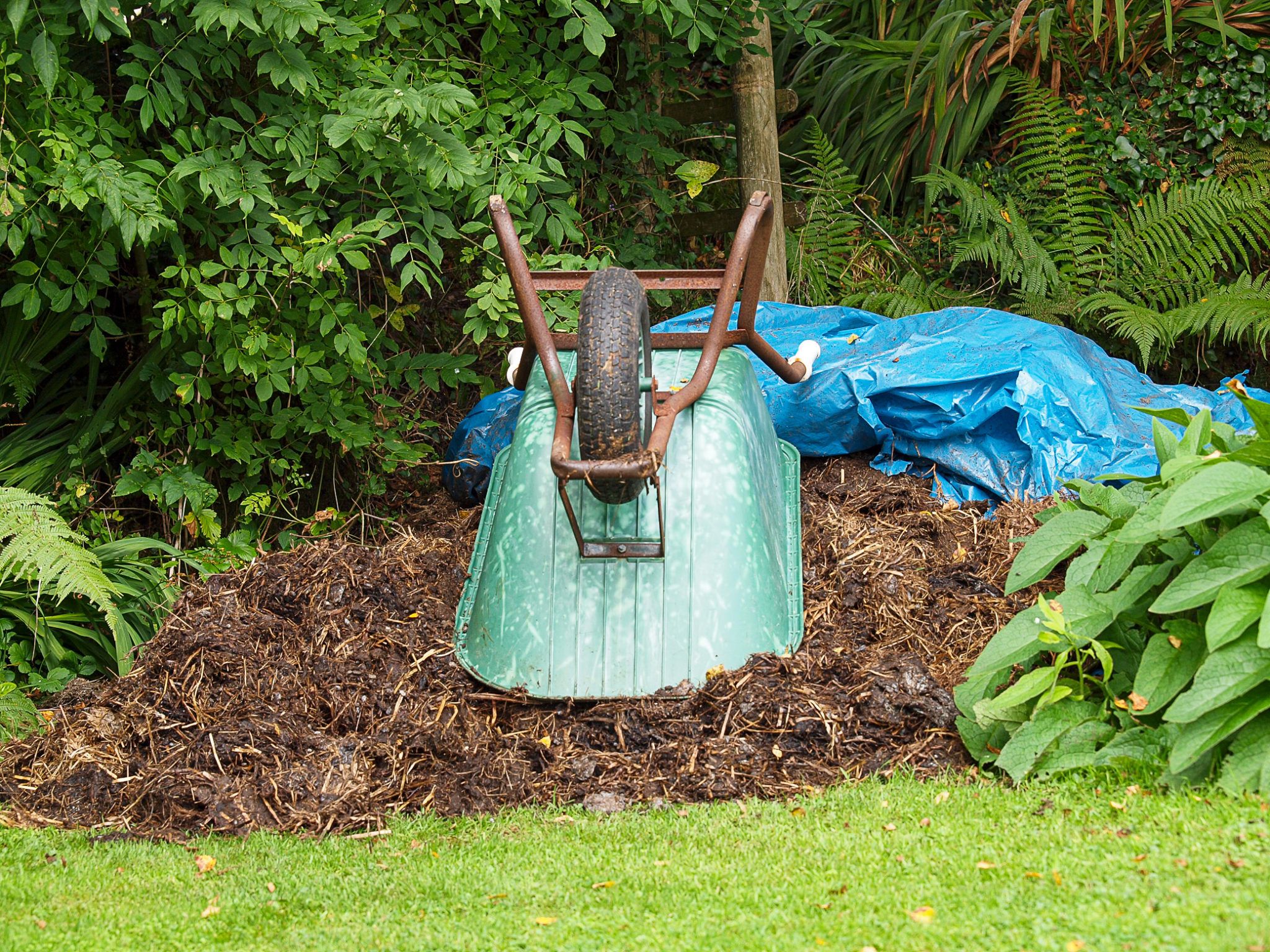BY JOYCE RUSSELL
WE really have had more rain than we need over the last few weeks and gardens are pretty soggy. Try to improve drainage where plants are standing in waterlogged soil and make a note of any parts of the garden that are wetter than others. This may change your plans for where you plant new bare-rooted trees and shrubs through the winter. You want to give any new plantings the best chance to thrive and it’s usually a good start to avoid anywhere where roots sit in a pool of water.
Fallen leaves
A lot of leaves have fallen at this stage and only a few late or sheltered trees are hanging onto their display of colour. Enjoy autumn leaves on trees until a wind brings them down and then enjoy the elegant structure of bare branches. At this point you have two things to consider:
- which leaves you need to rake into piles and move off lawns and paths. If leaves lie on beds then let them stay where they are to provide some soil structure and protection through the winter. Fallen leaves can be used to make leafmould, cover empty beds and add in thin layers to compost heaps. Don’t waste this free supply of soil enriching material.
- the exposed structure of trees and branches. This is a good time to assess if any branches are likely to fall, or indeed if there is any problem that might threaten the integrity of the whole tree. Ash dieback is spreading rapidly and killing trees. Controlled pruning or felling is always the best option for severely damaged trees. If dead trees are left to blow over in the next storm then they can cause a lot of damage to gardens and structures.
- Professional tree surgeons can be busy over the next few months so book a slot in good time if you have trees that need attention.
Soil food
 Cover manure piles. (Photo: Ben Russell)
Cover manure piles. (Photo: Ben Russell)
You can start gathering food for the soil now, but don’t dig it into beds unless you can provide a good waterproof covering. Heavy winter rain will wash a lot of nutrients out of the ground so be prepared to cover and contain any piles of soil food until they are needed.
Well-rotted manure and mature compost piles should be covered with strong polythene (preferably recycled). Weight the edges down well so the cover doesn’t blow off.
If you have small amounts of well-rotted garden compost, then put this in recycled potting compost bags or others that are large and strong enough. Tie the tops well and put a flat stone on top to shed water – bags can be stored outdoors until needed.
If manure and compost piles are only part-rotted, then cover with a slightly porous material or elevate the cover, or leave a few gaps or holes in the covering. This allows a small amount of moisture to enter the pile and also allows heat to escape if the rotting process is at a stage where a lot of heat is generated. The heap can be covered with polythene when the initial fast breakdown of material is completed.
Bolting leeks
 Nip the central stems out of bolting leeks. (Photo: Ben Russell)
Nip the central stems out of bolting leeks. (Photo: Ben Russell)
Leeks are such a useful winter vegetable and depending on the varieties you grow, they can be harvested over many months. I usually do an autumn variety that I use between August and Christmas. This is less hardy than some varieties and I may lose a few plants if we get an early hard frost, but the aim is to dig and use them before that point. A hardier winter variety will provide plenty of leeks for the first months of the new year. I like traditional Musselberg leeks but I find that Bandit is a much hardier winter variety.
Leeks don’t need much attention at the moment but there are a few things to look out for:
- Check for bolting stems and nip out any flower shoot before it gets too big. The hard core of a bolting leek should be removed when cooking but the outer layers will still be good to use.
- If a very hard frost is forecast, throw a cover of horticultural fleece over the leek bed. A double layer will provide extra protection.
- If outer layers start to brown and soften, then lift plants as soon as possible. Peel off any spoiled layers and the centre may still be useable.
- If a lot of plants are failing then lift them all and heel them into a sheltered corner of the garden. Aim to use these plants quickly – make leek and potato soup for the freezer.
Chance some late sowings under cover
You can try sowing rocket, mizuna and mustard greens in rows in a greenhouse or polytunnel. Or try sowing these in containers in a conservatory.








